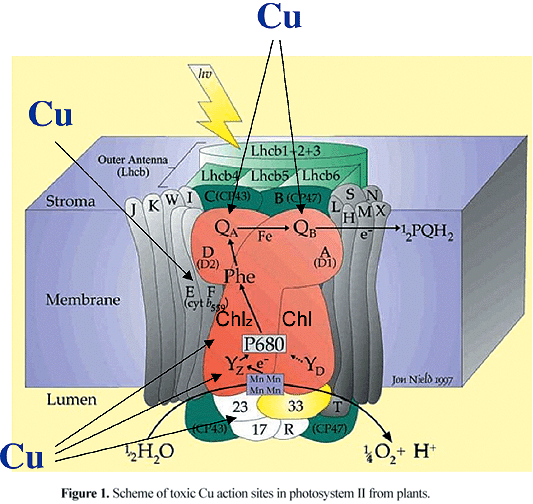Copper is an essential metal for normal plant growth and development, although it is also potentially toxic. Copper participates in numerous physiological processes and is an essential cofactor for many metalloproteins, however, problems arise when excess copper is present in cells. Excess copper inhibits plant growth and impairs important cellular processes (i.e., photosynthetic electron transport). Since copper is both an essential cofactor and a toxic element, involving a complex network of metal trafficking pathways, different strategies have evolved in plants to appropriately regulate its homeostasis as a function of the environmental copper level. Such strategies must prevent accumulation of the metal in the freely reactive form (metal detoxification pathways) and ensure proper delivery of this element to target metalloproteins. The mechanisms involved in the acquisition of this essential micronutrient have not been clearly defined although a number of genes have recently been identified which encode potential copper transporters. This review gives a briefly overview of the current understanding of the more important features concerning copper toxicity and tolerance in plants, and brings information of recent findings on copper trafficking including copper detoxification factors, copper transporters and copper chaperones.
copper homeostasis; copper transporters; detoxification; metalloproteins; toxicity

 Copper in plants
Copper in plants

